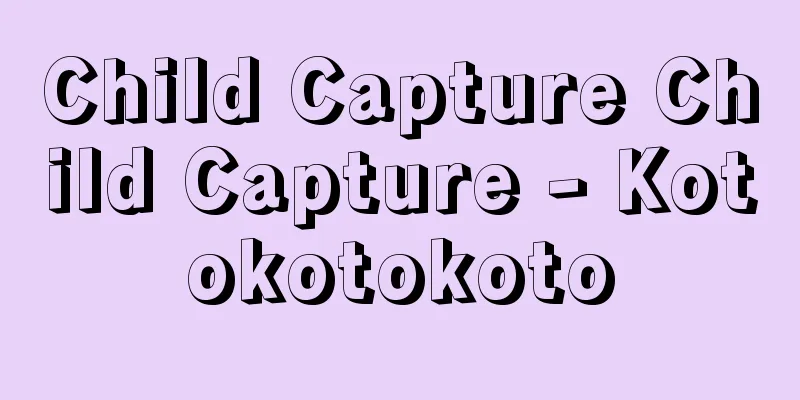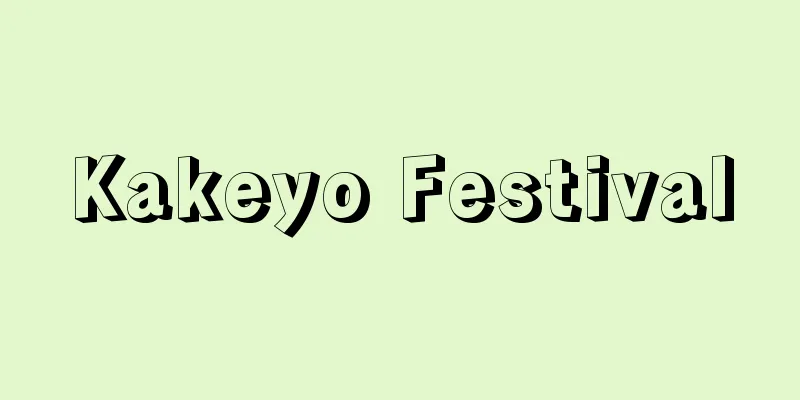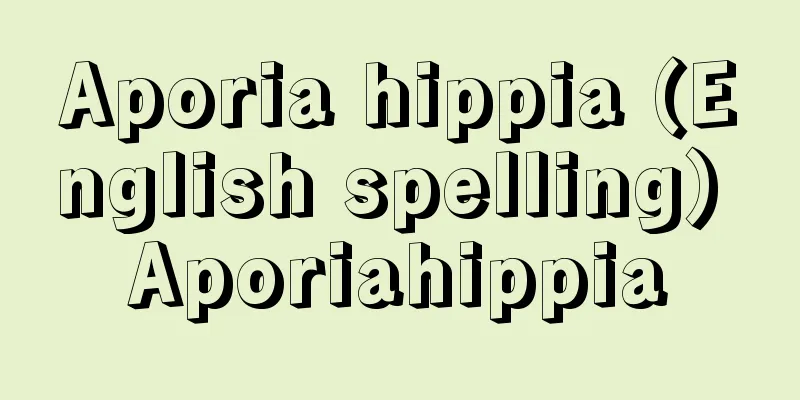Child Capture Child Capture - Kotokotokoto

|
It is a type of children's game called Oni-asobi. One Oni is chosen from the group, and the rest of the group is played by one parent and many children. This game has been played since the Heian period and was known as Hifukume. It is said to mean that Jizo Bodhisattva (Kisaragi Bodhisattva) prevents Oni from coming from hell to capture children, and is said to have been taught to children by Eshin Sozu. In the early Edo period, it was also called "Kodori Oni" (Child-catching Oni), and there is a dialogue between those who try to capture children and those who try to protect them from being captured. Oni: "Let's catch a child, let's catch a child." Everyone: "Which child did you find?" Oni: "Let's have a look at that child." Everyone: "Come on, let's try catching him." The format is that the parent facing the Oni is at the front, and the children are lined up vertically. The Oni chases the last child in the line left and right, trying to catch him, and the parent spreads his arms wide to block this and protects his child with all his might. In the end, the one who is captured becomes the next demon, who then becomes the parent. As interest in games shifted to the verbal exchanges of questions and answers mentioned above, various types of dialogue-style words developed across a wide area. Moreover, as this happened, "ko-kao" became a more appropriate name than "ko-toriro," and so a dialogue developed in which the demon said, "Koko-kao, ko-kao," everyone said, "What sweets for children, sugar and manju," and the demon said, "That's a deadly poison for insects." This is an example from Shirakawa, Oshu (Fukushima Prefecture), given in the "Fuzoku Monjo Tosho" (Fuzoku Monjo Tosho) from the end of the Edo period, but similar things developed in other areas as well, and the game itself changed into a form of buying and selling things. [Hisako Maruyama] [Reference] |Source: Shogakukan Encyclopedia Nipponica About Encyclopedia Nipponica Information | Legend |
|
子供の遊びで鬼遊びの一つ。一群のなかから1人の鬼を選び、その1人に対しほかは親1人と多数の子供という形で進められていく遊び。この遊びは平安時代から行われ、ヒフクメの名で知られていた。地獄から鬼が子供を捕りにくるのを地蔵菩薩(ぼさつ)が防ぐという意味ともいわれ、恵心僧都(えしんそうず)が子供たちに教えたものとも伝えられている。江戸初期には「子捕り鬼」ともよばれ、子を捕ろうとする者と捕られまいと守る者の間で、次のような問答がある。鬼「子を捕ろ子捕ろ」、一同「どの子をみつけた」、鬼「ちょっとみりゃあの子」、一同「さあ捕ってみしゃいな」というもので、形式としては、鬼に向き合った親を先頭にして子は縦に長くつながる。鬼は列の最後の子を捕ろうとして右に左に追いかけ、これを防いで親は両手を広げて懸命に子を守る。結局捕らえられた者が次の鬼となり、鬼は今度は親になるのである。 先に述べた問答のことばのやりとりに遊びの興味が移っていって、広い地域にさまざまな問答体のことばが発達している。しかもそうなると、「子捕ろ」でなく「子買(か)お」というほうが名称としてふさわしいものとなり、そこで、鬼「子買お子買お」、一同「子に何しんじょ、砂糖にまんじゅう」、鬼「それは虫の大毒」というような問答が発達する。これは幕末の『風俗問状答書』にあげられた奥州白川(福島県)の例であるが、ほかの各地にもこれとよく似たものが発達して、遊びそのものも、物の売り買いの形に変わってきている。 [丸山久子] [参照項目] |出典 小学館 日本大百科全書(ニッポニカ)日本大百科全書(ニッポニカ)について 情報 | 凡例 |
Recommend
Madame Bovary
A full-length novel by French novelist Flaubert. ...
Selling - Urimochi
At an exchange bank, the state in which the total ...
Medical Malpractice Insurance
...The Product Liability Act, which came into for...
Oiwa Fudo - Ooiwa Fudo
...The eastern part of the area is a mountainous ...
Insurable interest - hihokenrieki (English spelling)
The original purpose of the non-life insurance sy...
Watermelon - Watermelon
A creeping annual plant of the Cucurbitaceae famil...
Chimborazo [Mountain] - Chimborazo
A high peak in the Andes in central Ecuador, South...
Tanaka Jo
A forest botanist. Born in Tajima Province, in wha...
Bulbophyllum macraei (English spelling)
… [Ken Inoue]. … *Some of the terminology that me...
Industrial Democracy
A concept that seeks to democratize the social rel...
Ha Tien (English spelling)
A town in the northwestern tip of Kien Giang Provi...
sharpbill
… The crested sharpbill, or Oxyruncus cristatus ,...
Phyllium pulchrifolium (English spelling) Phylliumpulchrifolium
...They move slowly, and both adults and larvae f...
Auriga (the Charioteer)
Its abbreviation is Aur. It is a constellation in ...
net national welfare
...The factors that show the discrepancy between ...









